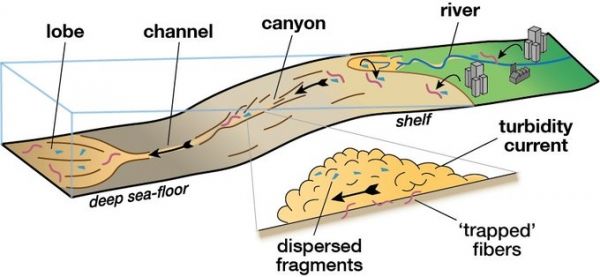The study also revealed that these flows, the largest on earth, are responsible for sorting different types of microplastics – burying some, and moving others vast distances across the sea floor.
These findings may help predict the location of future seafloor microplastic hotspots, which in turn could help direct research into the impact of microplastics on marine life.
Over 10 million tons of plastic pollution is exported into the oceans each year. It is thought that around 99% of this is stored in the deep sea, often prefentially accumulating in submarine canyons.
However, it was previously not known how plastic pollution gets to the deep sea from land. The new research, published in Environmental Science & Technology, has shown that microplastics can be moved by gravity-driven sediment flows, which can travel thousands of kilometers over the seafloor.
Continue reading at University of Manchester
Image via University of Manchester


